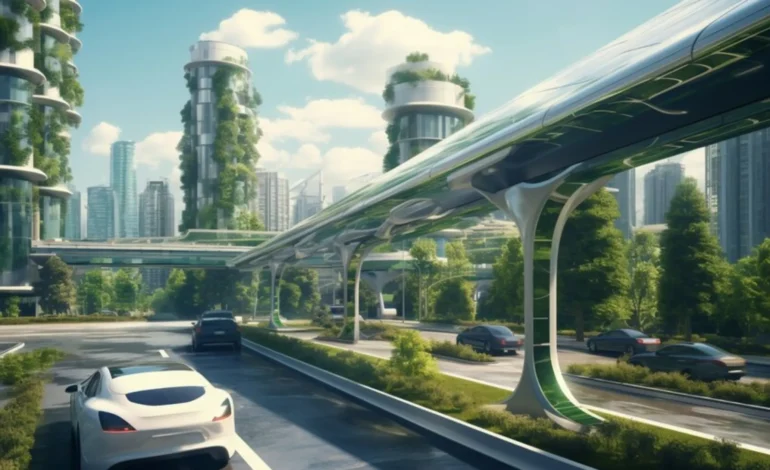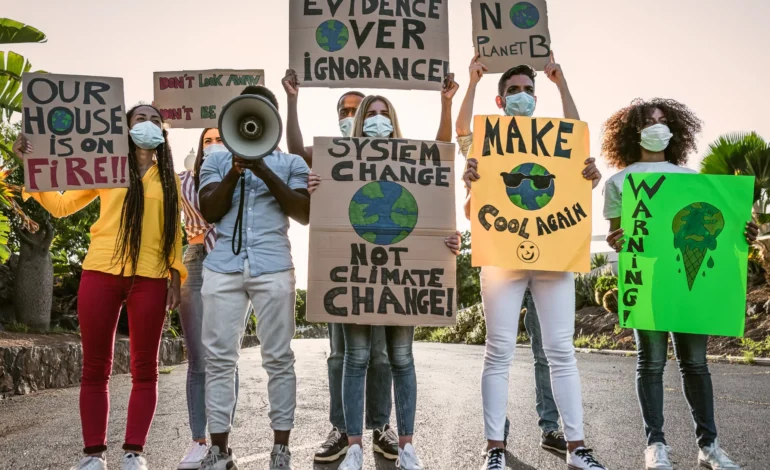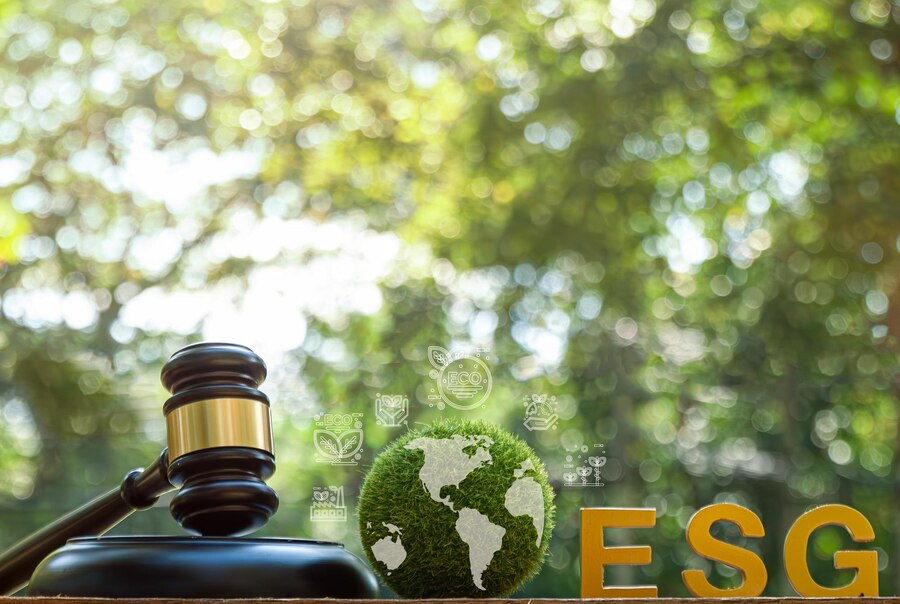
Eco-Friendly Infrastructure Projects: Balancing Development with Conservation
Introduction
As global populations grow and economies expand, the demand for infrastructure development increases. Roads, bridges, dams, and urban expansion are critical for economic growth and improving quality of life. However, these developments often come at a significant cost to the environment. The challenge lies in balancing the need for development with the imperative of conserving natural ecosystems. This is where eco-friendly infrastructure projects come into play, offering a solution that promotes sustainable development while safeguarding the environment.
The Imperative of Eco-Friendly Infrastructure
Green or sustainable infrastructure, or eco-friendly infrastructure, is infrastructure that has been designed, built, and operated with as little negative influence on the environment as possible. These initiatives incorporate environmental factors into the stages of planning and implementation, guaranteeing the preservation of ecosystems and natural resources.
There has never been a greater demand for environmentally responsible infrastructure. The depletion of natural resources, biodiversity loss, and climate change are urgent global challenges that require rapid response. These issues can be made worse by traditional infrastructure projects, which frequently entail significant resource exploitation, pollution, and land removal. However, eco-friendly infrastructure initiatives are necessary for a sustainable future since they cut down on waste, preserve natural ecosystems, and lower greenhouse gas emissions.
Key Principles of Eco-Friendly Infrastructure
Many fundamental concepts serve as a guide for eco-friendly infrastructure projects in order to strike a balance between development and conservation:
- Sustainable Design: When designing environmentally friendly infrastructure, all aspects of the project’s lifecycle—from construction to operation to eventual decommissioning—are taken into consideration. This entails utilizing materials that are low-impact on the environment, renewable, and long-lasting. It also entails creating buildings that are robust to climate change and use less energy.
- Resource Efficiency: The goal of environmentally friendly infrastructure projects is to use resources as efficiently as possible, minimizing waste and using less energy, water, and raw materials. Water-saving technologies, the use of renewable energy sources, and material recycling are a few ways to do this.
- Conservation of Biodiversity: An essential element of environmentally sustainable infrastructure is safeguarding biodiversity. This entails keeping or reducing the loss of natural habitats, repairing damaged ecosystems, and developing green areas that are home to a variety of wildlife. Initiatives may also incorporate strategies to support biodiversity in urban settings and lessen the impact on threatened species.
- Community Involvement: Local communities are involved in the implementation of successful environmentally friendly infrastructure projects. Interacting with stakeholders, such as locals, companies, and environmental groups, guarantees that the project satisfies community needs while preserving the environment. This may result in more long-lasting effects and increased public backing for the initiative.
- Climate Resilience: Extreme weather, rising sea levels, and more frequent and severe weather events are just a few of the major dangers that climate change poses to infrastructure. Natural cooling systems, flood barriers, and adaptable designs are just a few of the characteristics that eco-friendly infrastructure projects include to make them resistant to these changes.
Examples of Eco-Friendly Infrastructure Projects
There are many instances of environmentally friendly infrastructure initiatives that effectively strike a balance between development and conservation all around the world. These initiatives show that it is feasible to construct infrastructure that both satisfies human needs and safeguards the environment.
-
The High Line in New York City, USA
In Manhattan, New York City, The High Line is an elevated park constructed on a defunct railroad track. With the help of this creative effort, an abandoned industrial site was converted into a colorful green area that now functions as a home for urban wildlife, a local hangout, and a tourist destination. An outstanding example of how urban infrastructure may be converted to create a green area that benefits the community socially and economically, improves air quality, and increases biodiversity is the High Line.
-
Masdar City, Abu Dhabi, UAE
One of the world’s most ambitious environmentally conscious infrastructure projects is Masdar City. This proposed metropolis, which is situated in Abu Dhabi, aims to rank among the world’s most environmentally friendly cities. It has renewable energy-powered public transit, energy-efficient buildings, and a waste management system that optimizes composting and recycling. Masdar City is a new benchmark for sustainable cities, demonstrating how urban growth may be accomplished with little to no negative environmental impact.
-
The Dutch Delta Works, Netherlands
To prevent floods in the Netherlands, a sophisticated network of locks, dikes, sluices, dams, and storm surge barriers is known as the Dutch Delta Works. The Delta Works was developed with environmental issues in mind, even if flood protection is its main goal. The barriers’ purpose is to maintain the estuaries’ natural dynamics and biodiversity by allowing tidal flows to continue. One of the best examples of how infrastructure can be planned to accomplish several goals, such as environmental preservation, is the Delta Works.
-
The Green Bridge, Brisbane, Australia
Brisbane’s central business area and southern suburbs are connected by the Green Bridge, a pedestrian and bicycle route. The bridge’s design incorporates environmentally friendly features including solar panels, rainwater collection, and green walls that promote biodiversity in the area. The Green Bridge is an important addition to Brisbane’s urban scene since it encourages sustainable mobility, lessens traffic congestion, and improves the city’s green infrastructure.
Challenges and Opportunities in Eco-Friendly Infrastructure
Although environmentally friendly infrastructure projects have many advantages, there are drawbacks as well. The higher initial cost of sustainable design and construction is one of the main obstacles. Certain projects may find it challenging to obtain funding since sophisticated technologies, renewable energy sources, and eco-friendly materials can be more expensive than conventional solutions.
Nevertheless, the long-term financial benefits of environmentally friendly infrastructure may outweigh these upfront expenses. Because they use less energy, energy-efficient buildings, for instance, have lower running costs. The total economic viability of these projects can also be aided by the social and environmental advantages of eco-friendly infrastructure, such as better public health, higher quality of life, and greater property prices.
The requirement for legislative and policy frameworks that promote environmentally sustainable infrastructure is another difficulty. Through the implementation of laws that encourage green building practices, the provision of financial support for eco-friendly projects, and the enforcement of environmental rules, governments play a critical role in establishing the circumstances for sustainable development. In addition to being an effective strategy for removing legal and financial obstacles, public-private partnerships can also be a useful means of combining the resources and experience of both industries to produce long-term results.
There are many chances for environmentally sustainable infrastructure, despite these obstacles. Sustainable infrastructure solutions are becoming more and more in demand as environmental challenges become more widely recognized. The design and construction of environmentally friendly infrastructure is becoming easier thanks to technological advancements like smart city technologies, renewable energy systems, and green building materials. Furthermore, investments in sustainable infrastructure are being driven by the global push towards decarbonization and climate resilience, opening up new markets and potential for innovation.
The Role of Policy and Regulation
Promoting environmentally sustainable infrastructure is a major responsibility of governments and regulatory agencies. Developers may be more drawn to eco-friendly infrastructure if there are policies that encourage sustainable practices, such as tax credits for green buildings or grants for renewable energy projects. Furthermore, laws enforcing environmental standards—like caps on carbon emissions or mandates for biodiversity preservation—guarantee that infrastructure initiatives support more general sustainability objectives.
Governments are already moving to promote environmentally friendly infrastructure in several areas. To attain climate neutrality by 2050, the European Union’s Green Deal, for instance, makes large investments in environmentally friendly infrastructure. In a similar vein, sustainable urban development is encouraged by the implementation of climate action plans and green building rules in places like Vancouver and Copenhagen.
However, more robust and extensive legislative backing is required if eco-friendly infrastructure is to become the standard rather than the exception. This includes initiatives to increase awareness and create capacity among developers, planners, and other stakeholders in addition to monetary incentives and legal measures. Professionals in the infrastructure and construction industries can benefit from education and training programs by learning the advantages of eco-friendly methods and how to use them successfully.
Conclusion
Eco-friendly infrastructure projects are essential for striking a balance between development and conservation. It is feasible to satisfy the demands of an expanding population while safeguarding the environment by including sustainable design principles, resource efficiency, biodiversity conservation, community engagement, and climate resilience into infrastructure projects. Despite obstacles like greater initial prices and legal restrictions, eco-friendly infrastructure is a prudent investment in the future of our world due to its long-term advantages, both financial and ecological.
Sustainable and resilient infrastructure will be essential in forming our cities and communities as we transition to a more sustainable future. We can create a world where economic expansion and environmental stewardship coexist, ensuring a prosperous and healthy future for all, by placing conservation alongside development.





